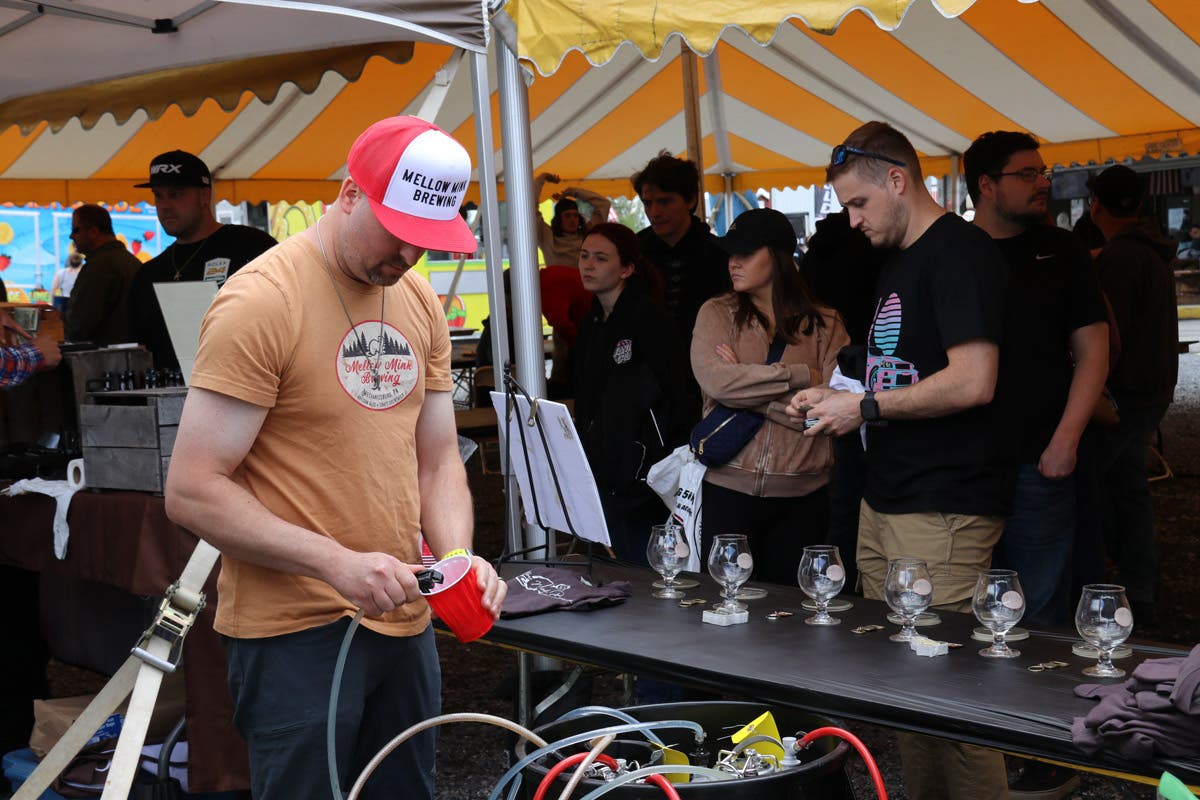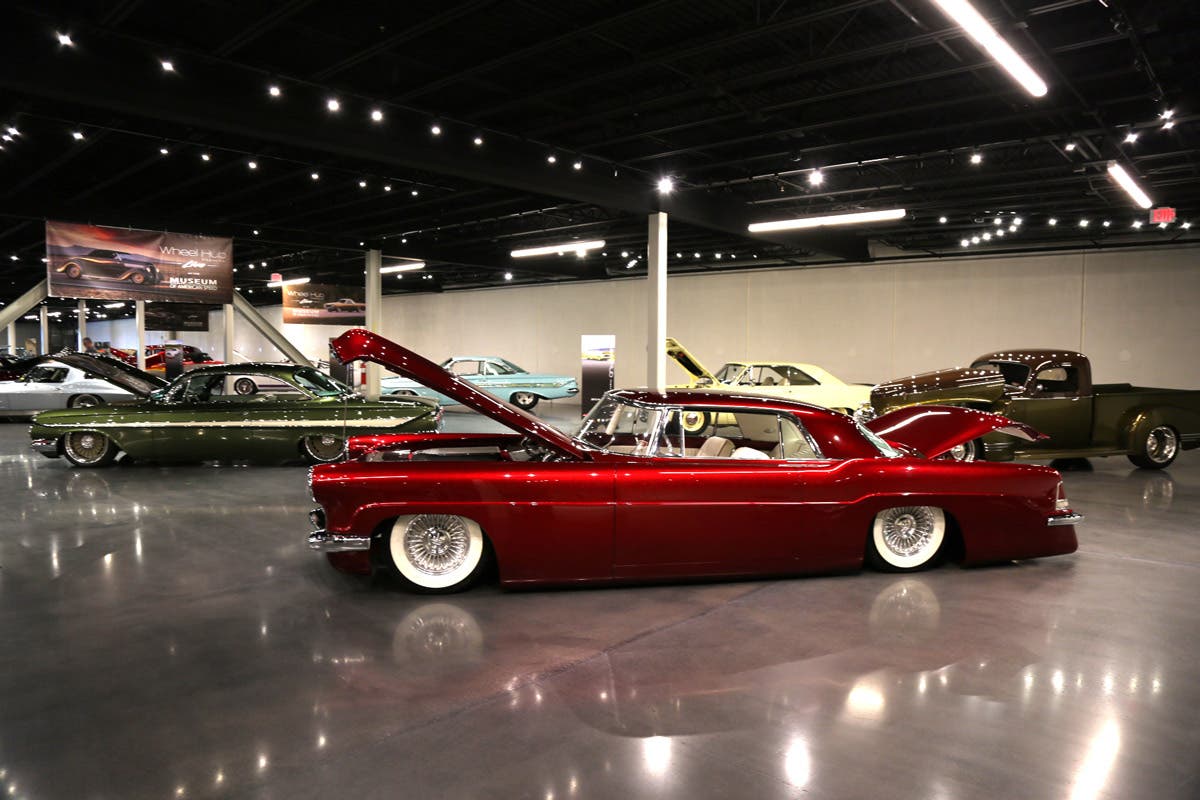The Mysterious Town Car Delray
Dealer special mated a Continental to a Town Car Story and photos by Bob Tomaine It takes more than a quick look for most of those who see Dan Mooney’s…
Dealer special mated a Continental to a Town Car
Story and photos by Bob Tomaine
It takes more than a quick look for most of those who see Dan Mooney’s 1987 Lincoln Town Car Delray Edition to realize that it’s not quite an everyday Town Car.
“It came out of Florida,” Mooney explained, “semi-customized by the dealer who sold it. I think what they did was get a used Continental trunk and rear-quarter extensions from an earlier-model Continental instead of a Town Car … The only difference is the trunk and the taillights, and if you didn’t know the car, (the trunk) does say ‘Continental’ on it. Then again, ‘Continental’ sounds good.”
The Continental Effect
Regardless of how it sounds, the “Continental” name has had an interesting and somewhat complicated history. The first Lincoln appeared in 1920, but two decades passed before a Continental arrived. As a high-end builder, Lincoln had felt the effects of the Great Depression and when forced to decide between fading away or taking a different approach, it chose the latter. The result was the Lincoln-Zephyr of 1936.
Created with aerodynamic streamlining in mind, the Lincoln-Zephyr wasn’t quite as happily eccentric as the first Chrysler Airflow, but it was still impossible to overlook thanks to the smoothly flowing lines that seemed to have been superimposed on a conventional design. Headlamps built onto the fenders mimicked the senior K-series Lincolns, as did the V-12 flathead that was based on the Ford V-8. Like Cadillac’s LaSalle and Packard’s 110 and 120, the Zephyr was considered a success.
For 1938, the Zephyr was heavily restyled with changes including a repositioning of the headlamps to a more conventional placement and a redesign of the grille and fenders, all making the package smoother still. It was restyled again for 1940, although the result was less radically changed than had been the 1938 Zephyr. Much more important that year was the introduction of the Continental, a model based on a one-off Zephyr customized for Edsel Ford.
Low-key but significant changes including an externally mounted spare tire at rear made the already attractive Zephyr into the Continental. Although the reaction among those who saw Edsel’s personal car convinced Ford to put the Continental into production, its overall appearance probably would have ensured the car’s success had it merely been placed in showrooms. So highly regarded was it that it returned after World War II alongside what by then was called just Lincoln. Given the sellers’ market existing in the immediate postwar years, the Continental wasn’t really critical to the lineup. About 3500 were sold from 1946 through 1948, but it was impossible to beat as what today would be called a halo car.
The V-12 of the Lincoln and Continental had no place in the postwar world and so when the all-new Lincolns arrived for 1949, they used V-8s. Like the 12-cylinder flathead, the Continental was gone for 1949, but the idea was too good to let die and in 1956, the Continental was back. Now using a modern overhead-valve V-8, it was again a breathtakingly attractive car. Unlike the Cadillac Eldorado and the Packard Caribbean that were also their makers’ flagships, the Continental Mark II was elegantly restrained and looked like no Lincoln because it was, in fact, not a Lincoln. Built by Ford’s Continental Division, it took the “Mark II” name as a direct tie to the original Continental series that was retroactively referred to as the “Mark I.” The new 1956 Continental even used a trunklid formed to resemble the original’s external spare tire. Essentially unchanged for 1957, it was replaced by the Mark III on the huge and very different Lincoln platform in 1958.
The Continental division disappeared after 1957, the Continental Mark IV and Mark V were the top Lincolns in 1959 and 1960, respectively, and just “Continental” became a Lincoln name. Continental Marks returned in 1968 with the Mark III — as if the 1959 version had never happened. Although not handcrafted as the Mark II had been, the 1968 Mark III was an expensive and striking coupe like the Mark II and shared its straight lines and long-hood-short-deck proportions. Continental Marks continued through the Mark VIII introduced in 1993 while Lincoln sedans became Lincoln Continental sedans. A Mark VI four-door sedan appeared for 1980 in addition to the standard Continental, the latter becoming the Lincoln Town Car in 1981 in preparation for the downsized Continental sedan of 1982. When it became the Town Car, the spare-tire bump that had been on the Continental’s trunklid was dropped.
Beyond typical annual updates, the pattern was set for Lincolns and Continentals through much of the decade with the only exceptions being the end of two-door Town Cars at the close of 1981 and of four-door Marks with the 1983 Mark VII’s arrival. A slight softening of the Town Car’s edges occurred for 1985. The Town Car was a solid seller through the 1980s despite an off year or two, no doubt because it continued to appeal to traditional buyers of luxury cars.
If the big rear-wheel-drive V-8 sedan seemed old-fashioned to some, Lincoln didn’t care and wasn’t afraid to promote it with the statement that “the heritage lives on in ’85. No other luxury car measures up to it — in style, comfort, or space” and added that its luxury features “help to explain why Lincoln Town Car sales have increased an impressive 44 percent over the last two years.” A 1986 brochure features the memorable tagline, “Lincoln. What a luxury car should be.”
What the devil is a Lincoln Delray?
The first owner of Mooney’s car might have been influenced by the promotional copy, but it’s more likely that he didn’t need to be since he was trading in a 1986 Lincoln. Whatever the reason, he bought it in January of 1987 from Delray Lincoln Mercury in Delray Beach, Fla., hence the “Delray Edition.” The car spent about a year in Florida, Mooney said, then the owner took it home to Scranton, Pa., and in about 1995, it ended up on a used car lot there. It was sold again and when that owner died several years ago, his son decided to advertise it for sale locally.
“It was in the paper,” Mooney said, “all over the paper and he only got two calls on it.”
Mooney bought it in the summer of 2019 and with just 55,000 miles showing on the odometer, the Lincoln was a running, driving car needing almost nothing.
“I did a little repair to the armrest,” he explained, “and charged the air conditioning and put a power window motor in the driver’s side front door. That’s it. It’s the only old car I’ve bought that I only spent $125 to fix.”
The Delray Edition is a trim package, so there are no mechanical differences from any other 1987 Town Car and Mooney’s fine with that.
“What I like about the car,” he said, “is that it’s (multiport) fuel-injected. The ones before were that throttle-body setup and what a pain … (Gas mileage is) maybe 15 or 16 around town. I’m sure it’s much better on the highway. We have a lot of hills where I am and you can’t get good gas mileage.”
That’s not the only reason why he likes it.
“It drives like a contemporary car,” he said. “You’ve got disc brakes, power steering.”
He’d just driven it to the St. Michael’s Church car show in Jermyn, Pa., a short distance from his home in Waverly, and said he’s sufficiently confident to drive it back to Florida. From the roughly 2000 miles he’s already driven it, he knows that the Town Car does get attention.
“Not like it would if it was a ’57 Chevy,” Mooney said, “but yeah, I get some comments on it. They know it’s a Lincoln.”








